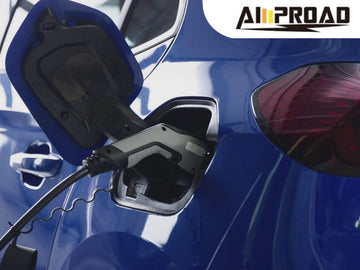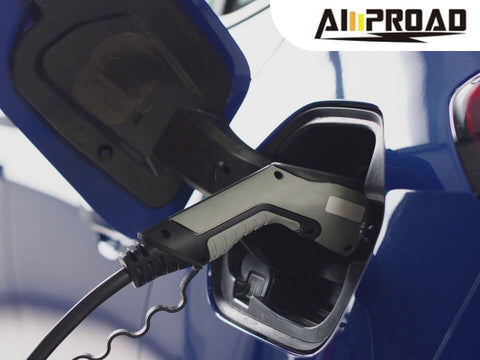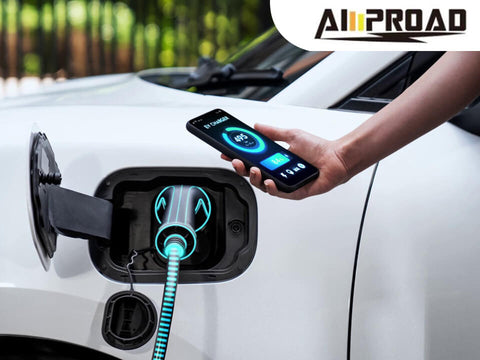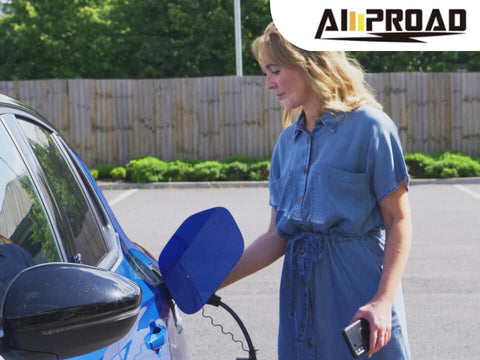
Embarking on the journey of electric vehicle (EV) ownership promises a greener and more sustainable future, but navigating the realm of EV charging can be daunting. To ensure a seamless charging experience, several key factors come into play. We explore the essential considerations that contribute to a smooth EV charging experience, offering practical insights and tips to help EV owners make the most of their charging routines. Whether you're a seasoned EV enthusiast or a newcomer to the electric mobility revolution, understanding these factors is essential for maximizing the convenience and efficiency of EV charging.
Understanding Charging Needs
Navigating the world of electric vehicle (EV) ownership involves understanding various factors crucial for a smooth charging experience. One of the foundational aspects is comprehending individual charging needs. Let's delve into how consumers can assess their charging requirements effectively:
How can consumers assess their daily driving habits and charging requirements?
Assessing daily driving habits and charging requirements is essential for determining the most suitable EV charger. Consumers should consider factors such as their average daily mileage, typical driving routes, and frequency of long-distance trips. By analyzing their driving patterns, consumers can estimate how often they'll need to charge their EV and the range required for their daily commutes. This information provides valuable insights into their charging needs and helps them select the right EV charger for their lifestyle.
What factors should consumers consider when determining the ideal charging solution for their needs?
Several factors come into play when determining the ideal charging solution for consumers' needs. Firstly, consumers should consider the charging speed of the EV charger, as this will impact the time required to recharge their vehicle. Level 1 EV chargers, which use a standard household outlet, provide slower charging speeds suitable for overnight charging, while Level 2 charger offers faster charging speeds and are ideal for home charging or workplace installations. Additionally, consumers should evaluate the compatibility of the EV charger with their vehicle's charging port and battery specifications. Factors such as portability, charging cable length, and connectivity options should also be taken into account to ensure convenience and flexibility in charging. By considering these factors, consumers can make informed decisions when selecting an EV charger that meets their specific needs and enhances their overall charging experience.
Selecting Charging Locations
Where can consumers find reliable and convenient charging locations?
Consumers have various options when it comes to finding reliable and convenient charging locations for their electric vehicles (EVs). One option is to utilize public charging networks, which offer charging stations located at shopping centers, parking lots, and other public facilities. Many of these networks provide online maps or smartphone apps that display the locations of charging stations, along with real-time availability and pricing information. Additionally, consumers can install charging stations at their homes or workplaces for added convenience and flexibility. Level 2 EV charger is commonly used for home EV charger installations, providing faster charging speeds than standard household outlets. Tesla owners can also take advantage of Tesla destination chargers, which are installed at hotels, restaurants, and other destinations, offering moderate charging speeds for Tesla vehicles. For quick top-ups during long journeys, consumers can utilize DC fast chargers, which provide rapid charging capabilities at select locations along highways and major routes.
What considerations should consumers keep in mind when selecting charging stations?
When selecting charging stations, consumers should consider several factors to ensure a seamless charging experience. Firstly, consumers should verify the compatibility of the charging station with their EV's charging port and battery specifications. Different EV models may require specific connector types or charging protocols, so it's essential to choose stations that support their vehicle's requirements. Additionally, consumers should consider factors such as charging speed, availability, and amenities offered at the charging location. Charging stations with faster charging speeds, ample availability, and convenient amenities such as restrooms or nearby attractions are preferable for a hassle-free charging experience. Lastly, consumers should be mindful of any applicable fees or subscription requirements associated with using the charging station, as well as any loyalty programs or incentives offered by charging networks. By considering these factors, consumers can select charging locations that meet their needs and enhance their overall EV charging experience.
Planning Charging Sessions
Planning your EV charging sessions efficiently is essential for a hassle-free experience. Here's how you can make the most of your charging time:
How can consumers plan their charging sessions to minimize downtime and inconvenience?
To minimize downtime and inconvenience during charging sessions, consumers can take proactive steps to plan their charging routines effectively. One option is to utilize scheduling features available on EV chargers, such as the AMPROAD portable EV charger. With its ability to set charging times directly on its LED screen and monitor charging progress via a mobile phone app, consumers can optimize their charging sessions to align with their schedules and energy needs. By scheduling charging sessions during off-peak hours or when electricity rates are lower, consumers can take advantage of cost savings and reduce strain on the electrical grid. Additionally, planning charging sessions based on anticipated driving patterns and daily activities can help ensure that EVs are adequately charged and ready for use when needed, minimizing downtime and maximizing convenience for consumers.
What tools and resources are available to help consumers plan their charging routes effectively?
Several tools and resources are available to help consumers plan their charging routes effectively and navigate the EV charging landscape with ease. Online mapping services and smartphone apps, such as PlugShare and ChargePoint, provide interactive maps that display the locations of charging stations along with real-time availability and pricing information. These platforms also offer features such as route planning and trip optimization, allowing consumers to identify charging stations along their intended route and plan their charging stops accordingly. Additionally, EV manufacturers often provide built-in navigation systems or companion apps that include EV-specific features, such as route planning based on battery range and charging station compatibility. By leveraging these tools and resources, consumers can access comprehensive information about charging infrastructure and make informed decisions when planning their EV charging routes, ultimately enhancing their overall charging experience.
Monitoring Battery Levels

Keeping an eye on your EV's battery level is crucial to ensure you never run out of charge unexpectedly. Here's how you can stay on top of it:
How can consumers monitor their EV's battery level to ensure timely charging?
Before embarking on any journey, it's essential to check your EV's battery level. Most electric vehicles come equipped with a dashboard display that shows the remaining battery charge. Additionally, many EVs are compatible with mobile apps that allow you to monitor your vehicle's battery status remotely. By regularly checking the battery level, you can plan your charging stops accordingly and avoid running out of charge during your travels.
What are the warning signs of a low battery, and how can consumers address them proactively?
Several warning signs indicate that your EV's battery is running low. These may include a low battery warning light on the dashboard, decreased acceleration performance, or a reduced range estimate. If you notice any of these signs, it's essential to take proactive measures to avoid being stranded without power. Find the nearest EV charger using navigation tools or mobile apps and plan to recharge your vehicle as soon as possible. By addressing low battery warnings promptly, you can ensure a smooth and uninterrupted driving experience with your EV.
Utilizing Charging Networks
Effectively utilizing public charging networks is key to maintaining your electric vehicle's (EV) charge on the go. Here's how you can make the most of these networks:
What steps should consumers take to utilize public charging networks effectively?
When using public charging networks, it's essential to plan ahead. Before your journey, identify charging stations along your route using apps or online maps. Ensure your EV is compatible with the charging network and connector types available at the stations. Arrive at the charging station with sufficient time to charge your vehicle fully. Be mindful of charging etiquette by unplugging your EV promptly once charging is complete to allow others to use the station.
How can consumers navigate different charging networks and access charging station amenities?
Navigating different charging networks can be simplified using EV charging apps or websites that provide comprehensive information about available stations, including network compatibility, charging speeds, and real-time availability. Some charging networks offer amenities such as restrooms, shopping centers, or dining options near charging stations, enhancing the overall charging experience. Additionally, EV drivers can take advantage of Tesla destination charger networks, which are strategically located at hotels, restaurants, and other destinations, providing moderate charging speeds for Tesla vehicles. By leveraging these resources and amenities, consumers can navigate various charging networks with ease and convenience, ensuring they always have access to reliable charging options for their EVs.
Staying Informed

Remaining updated on charging infrastructure, incentives, and EV technology advancements is vital for every electric vehicle (EV) owner. Here's how you can stay informed:
Where can consumers find up-to-date information about charging infrastructure, incentives, and policies?
To access current information about charging infrastructure, incentives, and policies, consumers can turn to various resources. EV charging apps, websites, and online forums often provide real-time updates on charging station locations, availability, and pricing. Additionally, government websites and EV advocacy groups offer valuable insights into incentive programs, such as tax credits or rebates, available for EV owners. Staying informed about policy changes related to EVs, such as zoning regulations or emissions standards, ensures compliance and maximizes benefits for EV owners.
How can consumers stay informed about advancements in EV technology and charging solutions?
Keeping abreast of advancements in EV technology and charging solutions is essential for optimizing the performance and efficiency of your EV. EV manufacturers frequently release updates and announcements about new models, features, and charging capabilities through their official websites and newsletters. Following reputable EV news outlets and subscribing to industry publications provides additional insights into emerging technologies, trends, and best practices in EV ownership. By staying informed, consumers can make informed decisions about their EVs, stay ahead of the curve with the latest innovations, and maximize their overall EV ownership experience.
Essential Strategies to Ensure Smooth EV Charging
Ensuring a smooth EV charging experience requires careful planning and consideration of various factors. Consumers should prioritize understanding their charging needs, selecting reliable charging locations, monitoring battery levels, and staying informed about charging infrastructure and advancements in EV technology. By leveraging available tools and resources, such as EV charging apps, online maps, and EV charger manufacturer resources, consumers can optimize their charging routines and minimize downtime. Implementing proactive strategies, such as scheduling charging sessions during off-peak hours and taking advantage of incentives and loyalty programs, can further enhance the efficiency and convenience of EV charging. Ultimately, staying informed, planning ahead, and adapting to evolving technologies are essential for maximizing the benefits of electric vehicle ownership and ensuring a seamless charging experience.



